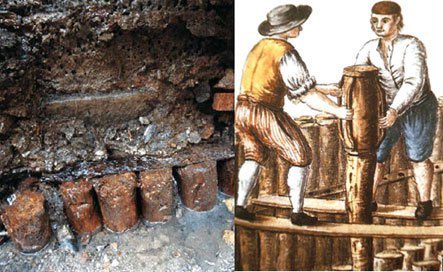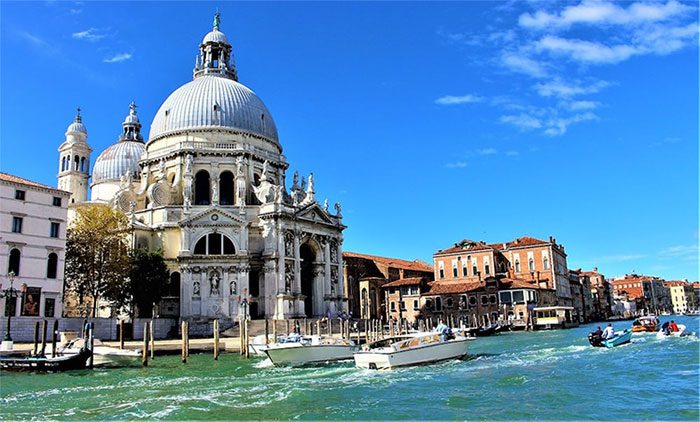The city of Venice in Italy is also known as the Floating City. This is because Venice is a cluster of 118 small islands connected by a series of bridges and canals. However, Venice is not built directly on the islands, but rather on a system of wooden platforms supported by wooden piles driven into the water below.

Venice is the most famous tourist destination in Italy. (Photo: Shutterstock).
The story of Venice began in the 5th century AD. After the fall of the Roman Empire, barbarian tribes from the north ravaged territories once governed by Rome. To escape these persecutions, the Venetians had to abandon their homes and seek refuge in the surrounding marshlands, and on the islands of Torcello, Iesolo, and Malamocco.
Initially, they stayed temporarily in the wild, but over time the Venetians became accustomed to the area and decided to settle permanently. To construct solid buildings, they first had to drive wooden piles into the sandy ground. Then, wooden platforms were installed on top of these piles, and finally, houses were built on them.

The wooden piles, the foundation of Venice.
A book published in the 17th century recounts the construction of Venice, describing the amount of wood needed just for the piles. When the church of Santa Maria Della Salute was built, 1,106,657 wooden piles, each 4 meters long, were driven into the water. This process took 26 months to complete. The wood was sourced from forests in Slovenia, Croatia, and Montenegro, then transported to Venice by water. The scale of this grand project must have been astonishing.

The Santa Maria Della Salute church in Venice. (Photo: maxpixel).
Using wood to support building structures may seem puzzling, as wood is not as durable as stone or metal. However, the secret to the longevity of Venice’s wooden piles lies in the fact that they are submerged underwater. Wood exposed to air decays due to tiny agents such as fungi and bacteria. By being submerged in water, the wooden piles in Venice do not come into contact with oxygen, an essential factor for the growth of microorganisms. Additionally, the continuous flow of seawater around and through the wooden piles causes them to harden and become as solid as stone.
As a city situated amidst waters, Venice has a significant advantage over neighboring cities built on solid ground. Initially, Venice allowed its inhabitants to avoid invasions. Pepin, the son of Charlemagne, attempted to attack Venice but could not reach the island where the city was built. Subsequently, Venice became a maritime power in the Mediterranean. In 1204, Venice allied with the Crusaders and successfully captured the Byzantine capital of Constantinople. However, the city began to decline in the 15th century and eventually fell to Napoleon in 1797 when he conquered Italy.
Today, the waters that once protected the city from countless foreign attacks have become a threat to its very existence. For the people of Venice, flooding is a normal occurrence, with water levels rising more than a dozen times each year. The flooding is primarily due to unusual tidal surges caused by strong winds, storms, and heavy rainfall on the mainland. However, this phenomenon is becoming increasingly frequent due to rising sea levels from climate change, raising alarm bells for the entire city.
A series of measures have been discussed to save Venice from sinking. One of these is the Mo.S.E Project (Modulo Sperimentale Elettromeccanico, or Experimental Electromechanical Module). This project will construct 79 movable barriers to prevent the waters inside the city from the Adriatic Sea when the tide rises above 1 meter compared to the normal high water level.
However, many pessimistic observers believe that such measures are insufficient to preserve Venice forever, and that the city will ultimately sink to the ocean floor, similar to the legendary Atlantis of old.





















































